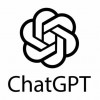Introducing canvas
Introducing canvas
A new way of working with ChatGPT to write and code
We’re introducing canvas, a new interface for working with ChatGPT on writing and coding projects that go beyond simple chat. Canvas opens in a separate window, allowing you and ChatGPT to collaborate on a project. This early beta introduces a new way of working together—not just through conversation, but by creating and refining ideas side by side.
Canvas was built with GPT-4o and can be manually selected in the model picker while in beta. Starting today we’re rolling out canvas to ChatGPT Plus and Team users globally. Enterprise and Edu users will get access next week. We also plan to make canvas available to all ChatGPT Free users when it’s out of beta.
Better collaboration with ChatGPT
People use ChatGPT every day for help with writing and code. Although the chat interface is easy to use and works well for many tasks, it’s limited when you want to work on projects that require editing and revisions. Canvas offers a new interface for this kind of work.
With canvas, ChatGPT can better understand the context of what you’re trying to accomplish. You can highlight specific sections to indicate exactly what you want ChatGPT to focus on. Like a copy editor or code reviewer, it can give inline feedback and suggestions with the entire project in mind.
You control the project in canvas. You can directly edit text or code. There’s a menu of shortcuts for you to ask ChatGPT to adjust writing length, debug your code, and quickly perform other useful actions. You can also restore previous versions of your work by using the back button in canvas.
Canvas opens automatically when ChatGPT detects a scenario in which it could be helpful. You can also include “use canvas” in your prompt to open canvas and use it to work on an existing project.
Writing shortcuts include:
- Suggest edits: ChatGPT offers inline suggestions and feedback.
- Adjust the length: Edits the document length to be shorter or longer.
- Change reading level: Adjusts the reading level, from Kindergarten to Graduate School.
- Add final polish: Checks for grammar, clarity, and consistency.
- Add emojis: Adds relevant emojis for emphasis and color.
Coding in canvas
Coding is an iterative process, and it can be hard to follow all the revisions to your code in chat. Canvas makes it easier to track and understand ChatGPT’s changes, and we plan to continue improving transparency into these kinds of edits.
Coding shortcuts include:
- Review code: ChatGPT provides inline suggestions to improve your code.
- Add logs: Inserts print statements to help you debug and understand your code.
- Add comments: Adds comments to the code to make it easier to understand.
- Fix bugs: Detects and rewrites problematic code to resolve errors.
- Port to a language: Translates your code into JavaScript, TypeScript, Python, Java, C++, or PHP.
What’s next
Making AI more useful and accessible requires rethinking how we interact with it. Canvas is a new approach and the first major update to ChatGPT’s visual interface since we launched two years ago.
Canvas is in early beta, and we plan to rapidly improve its capabilities.


